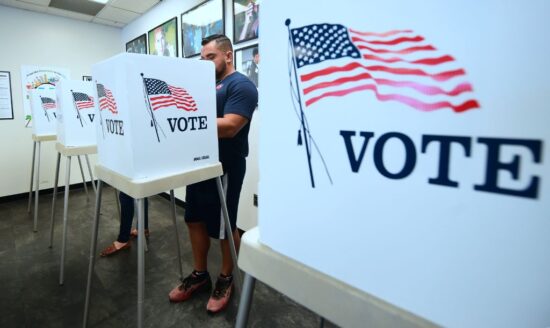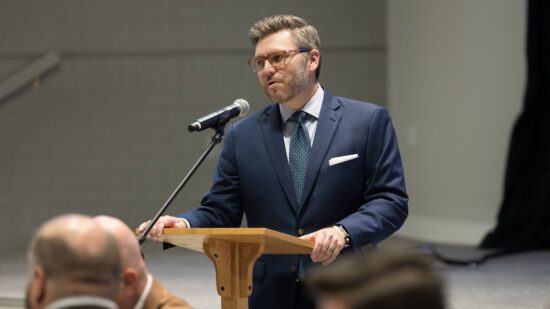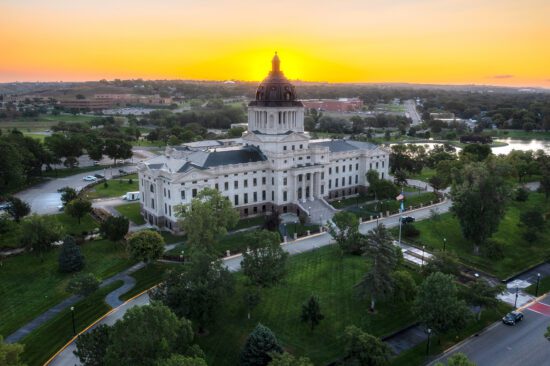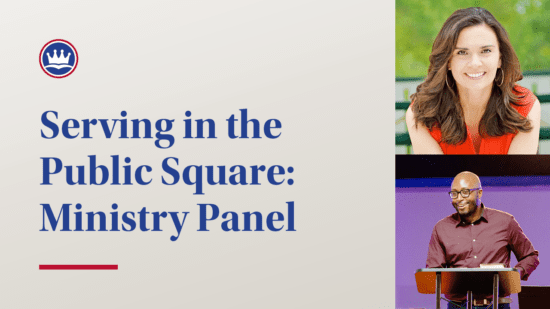This past weekend many pastors across America faced a situation they never would have imagined: preaching an Easter sermon to a congregation trapped in their homes.
We should be exceedingly grateful that the Lord has given us the technology to make remote preaching possible. But our appreciation does not dull the sense of loss that is felt when standing in your living room preaching to a video camera. Pastors have a natural longing to worship in the presence of God’s people, especially on the biggest holiday of the year, which is why we are all wondering, “When will we be able to meet again in person?”
The short answer, of course, is that no one (other than God) knows when that day will come. While many medical experts and government officials have expressed their preferences, no authority in our country can set a definitive timeline because they are weighing multiple factors in making the decision to lift the stay-at-home orders, some of which are presently unknowable.
Medical factors
In an ideal situation, the decision about when it was safe to return from a medical crisis would be based solely on medical criteria. Although the medical models have varied widely (mostly because of lack of adequate testing and data in the United States), the medical elements that weigh into the decision are rather straightforward: We need to drastically lower the infection rate and/or drastically increase herd immunity.
The infection rate (R0 or “R naught”) describes the average number of additional infections caused by a person who has contracted the virus. For example, measles is highly contagious with a range of 12 to 18, while influenza is moderately contagious with a range of 2 to 3. That means a person with the measles will (on average) infect 12 to 18 other people, and a person with the flu will infect 2 to 3.
A new study highlighted by the CDC says the median R0 for COVID-19 in the China outbreak was about 5.7. Ideally, social distancing practices can help to get the number below 1, the point at which the virus is not spreading fast enough to be an epidemic. However, if the number stays above 1, the epidemic will continue until there is sufficient herd immunity (i.e., when a high enough percentage of a community becomes immune to a disease because of vaccination and/or prior illness).
Because we currently have no vaccine available, the percentage of herd immunity right now is based solely on prior infection. It will take time for herd immunity to build up to appropriate levels for the quarantine to end. Some predictions estimate that there could be an additional 1.5 million to 1.7 million deaths (the same number of people who died from cancer in 2019) before we reach the necessary level of immunity in the general population.
Psychological and political factors
If medical considerations were our only concern, we could just implement “suppress and lift” policies based on the infection level of a geographic area. But as we’ve seen, many Americans oppose such measures for a variety of reasons. Some reject any sort of quarantine (seeing it as a violation of their civil liberties), while others are confused as to why different parts of the country are not also quarantined. Further, the emotional toll of the stay-at-home strategy is beginning to wear on even the most committed social distancing advocate. However, government officials know that it will be difficult to begin another round of quarantines once this one ends.
Since we don’t have adequate testing, the best metric for the peak of the crisis is the number of daily deaths related to COVID-19. Current projections—assuming full social distancing through May 2020—estimate the peak occurred around Easter weekend. Some state governments are likely to reopen or loosen restrictions as early as May 4; others may attempt to hold out longer.
Now is the time to prepare
Elders of local churches need to prepare policies and communicate how they will be implemented. Here are some questions that will need to be addressed:
How will you decide when to reopen? Scripture tells us that we must be subject to governing authorities (Rom. 13:1). But we should recognize that there are multiple authorities speaking into these decisions. If guidance issued by various governments and public health officials about when it is safe to meet seems unclear or to be in conflict, make sure that you are committed to taking every precaution to care for and protect the people you serve in your church and community—and make sure you are communicating your plans to them.
When will you reopen? Will you hold church services the first Sunday after being allowed to do so? What if the announcement comes on a Saturday? Will your ministry team be prepared? Even when shelter-in-place orders are lifted, bans on large gatherings may remain in place. Smaller congregations may be able to meet in person, while larger church bodies may still be legally prohibited. Pastors need to prepare now to deal with how that difference might affect their church community.
What mitigation policies will you be putting in place? Being allowed to return to our church buildings does not mean our churches are safe from the coronavirus. How will we protect the elderly, pregnant, and immunocompromised? What mitigation measures will be put in place to protect our people? What level of risk are we willing to accept to meet again in person?
These are just a few of the questions all churches must address. Whether you are a solo pastor or have a staff of hundreds, you need to make plans for how you will respond to the myriad concerns of your congregation. You don’t need to have all the answers, but your people should see that you’ve given these issues serious thought and consideration. Some of them will be putting their health in your hands, so be sure you’re using this time of lockdown to prepare for the time when the church doors open once again.
A version of this article originally appeared here.










